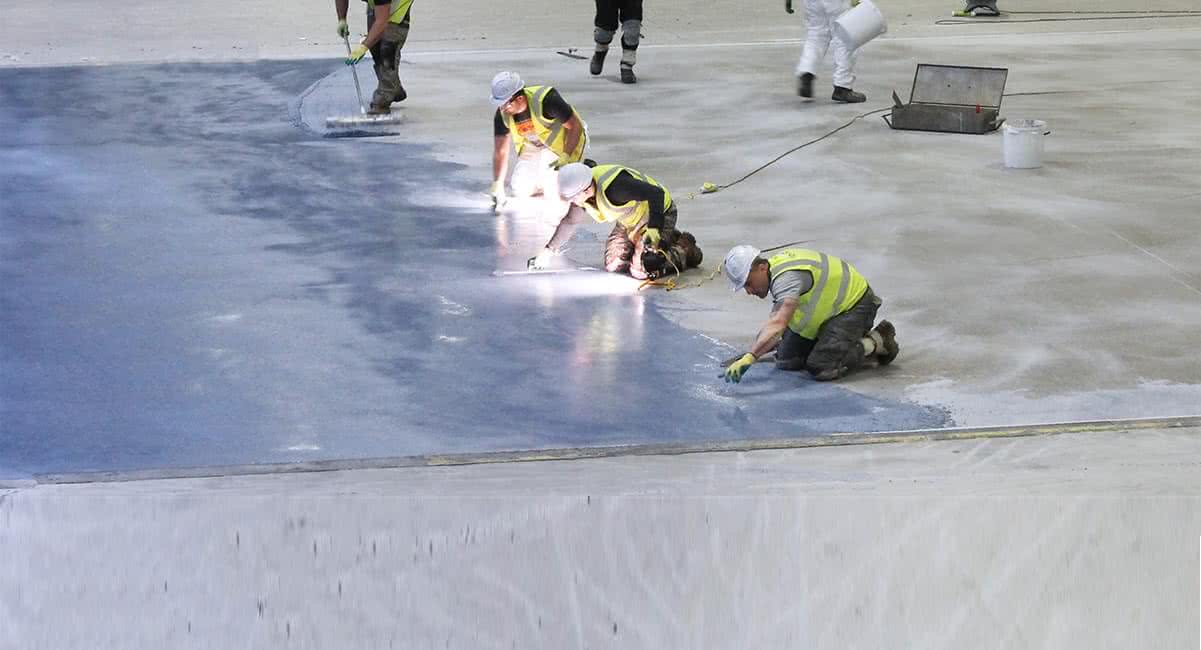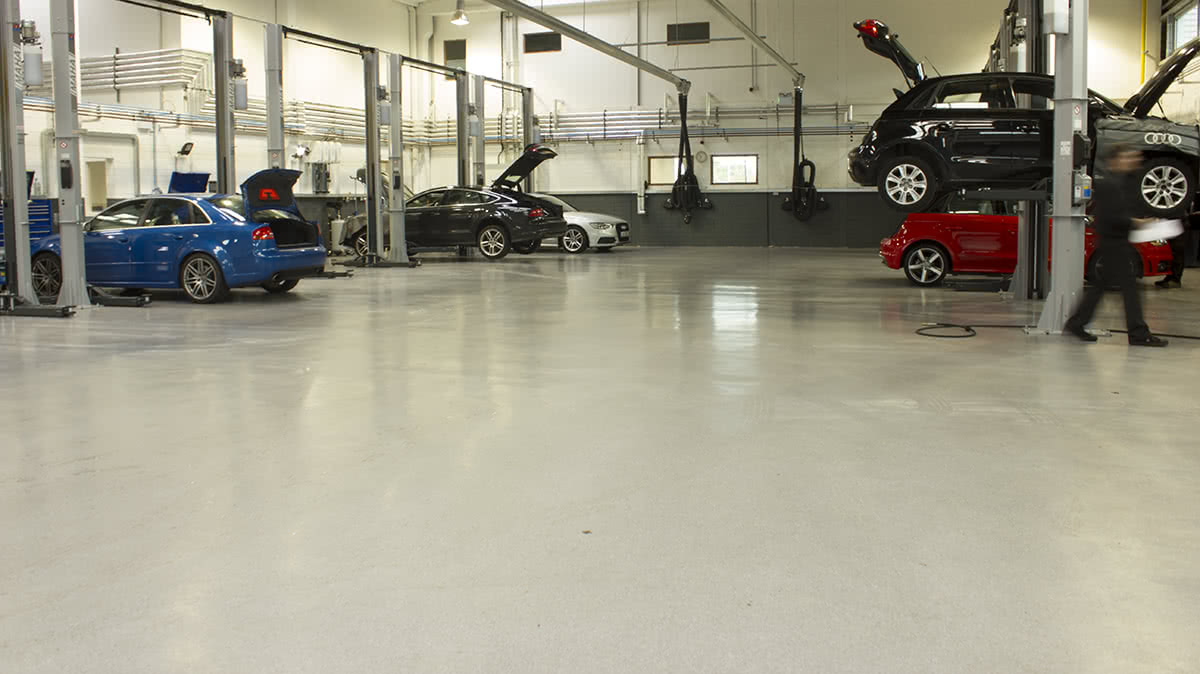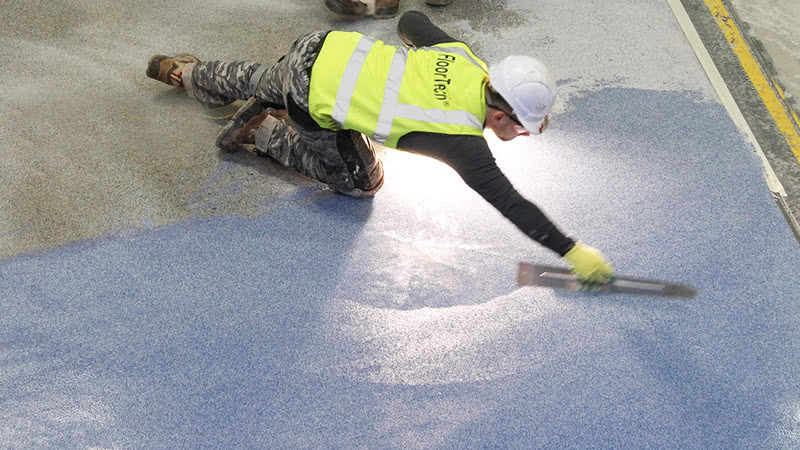When & How to Select Anti-Static Flooring

Selecting the right industrial flooring for your needs can be a complicated undertaking. Besides the obvious considerations of colour and material, there may be specific performance requirements to take into account, particularly when the area may be used for highly sensitive operations such as healthcare or delicate manufacturing processes.
For a wide range of industries, one critical consideration is whether a floor needs to be anti-static. Determining that answer is just the first step: if you need anti-static flooring, you also need to know the types available, the benefits and the options to consider when choosing an anti-static floor provider.
What Is Anti-Static Flooring?
Anti-static industrial floors inhibit the generation of electrostatic discharge or ESD, which is the pulse of static electricity that happens when a charged person or surface comes into contact with another object. The discharge may be visible as a spark or tiny blue bolt of electricity, although the majority of static electricity is not usually apparent.
We commonly refer to ESD as ‘getting a shock’ off an object or person, and in most instances, the static discharge is harmless, even if it hurts slightly when it occurs. In certain environments, however, an electrostatic discharge can be highly dangerous and potentially even catastrophic. In those cases, installing anti-static flooring is an essential step in creating a safe environment for workers and visitors.

Who Needs Anti-Static Floors?
While many organisations may consider anti-static flooring options for a variety of reasons, certain industries require anti-static floors as a most basic safety precaution. Chemical manufacturers and processors, as well as any businesses that may use flammable chemicals or materials in their operations, need to create static-free work environments to avoid igniting chemicals, fumes or even microscopic flammable particles. Electrostatic discharge can render sensitive electronic components useless, so organisations involved in the production or assembly of semiconductors or electronic goods need anti-static floors.
Additionally, any operations that rely on uninterrupted or guaranteed use of specialised electronic items, such as hospitals or air-traffic control rooms, should take precautions to avoid static. Other examples of industries that require anti-static flooring include munitions or pyrotechnics manufacturing, military operations, micromechanics, optical lenses, photographic film, lasers, biotechnology, pharmaceuticals, surgical implant manufacturing, medical environments and even some food and beverage production environments.
How Does Anti-Static Flooring Help?
Anti-static floors help by taking the static electricity that builds up naturally in any environment and moving it through the floor to ground. By grounding the charge, anti-static flooring prevents the ESD from building up and discharging into the environment, where it could be destructive to goods or dangerous to people.
Almost any movement within an environment will contribute to the static electricity present, whether it’s the familiar walking across a carpet in an office, the everyday movement of vehicles or heavy equipment over a warehouse floor or the repetitive movement of parts of an automated machine in a factory. That majority of electrostatic discharges are below 3,500 volts and totally undetectable to people, so we’re not even aware of most of the potentially dangerous ESD happening all around us. Anti-static flooring, however, is capable of capturing all those charges and grounding them before they cause reactions.
How to Select Anti-Static Floors
Just as there are many uses for anti-static flooring, there are also many choices to consider when choosing an anti-static floor. The first step is to understand the risks and requirements for your specific use case, including how electrostatic energy is generated in your location, the estimated strength of your average ESD and the potential consequences of electrostatic discharges in your facility. Next, it’s important to understand the subtle but important differences in static control terminology to help you decide which type of anti-static flooring is right for you.
The resistance or impedance of anti-static flooring is expressed in ohms (Ω), a unit of measurement named after Georg Ohm, the German physicist who discovered Ohm’s Law, which governs electrical currents through conductors. Anti-static flooring options include conductive and dissipative systems, which offer different ranges of electrical resistance; in general, conductive flooring offers a resistance of up to 1 mega Ω, and static dissipative flooring provides resistance between 1 mega Ω and 100 mega Ω.
In simple terms, higher resistance equals lower conductivity of energy; however, that doesn’t mean that lower resistance is necessarily the better option for anti-static floors. In fact, in most “mission-critical” environments like emergency call centres or air traffic control towers, grounding standards recommend static dissipative flooring over conductive flooring options. The right choice for you really depends on your specific needs.

Choosing a Solution and Provider
Regardless of which anti-static flooring solution you choose, professional and knowledgeable installation will make a big difference in the success and longevity of your floor. It is important to choose a provider or contractor based on their experience and reliability—not because of their lower price. The total cost of ownership of any industrial floor, whether anti-static, resin, concrete or carpet, does not end with the installation. There are maintenance and repair to think of, which means warranties and quality matter. Check out the company providing the solution, including their history and reputation; no one worthwhile will fault you for being thorough in your flooring consideration.
Equally important is a thorough understanding of the maintenance requirements and potential repair costs of your anti-static floors. Epoxy anti-static floors cannot be overlaid as this will insulate the floor from the earthing points so the epoxy must be first removed back to the substrate, with new copper strips installed for re-earthing and grounding. The new epoxy coating is then installed with an additional 7 days before the epoxy fully cures. Vinyl flooring will have a shorter life expectancy and a lower abrasion resistance resulting in the need for maintenance and ultimately replacement in a far shorter period. Conversely, PMMA resin flooring can be reverse-cured, which makes spot repairs easy to do. Get to know the needs of the floor types you’re considering and factor the expected costs of maintenance and repairs into your budget to get a true picture of how much a solution will cost.
Verifying Sub-Floor Conditions
The success of any anti-static flooring solution is largely dependent on the quality of the site in which it is installed. Contaminated concrete or moisture problems can lead to ineffective and even problematic flooring. Most issues can be solved ahead of installation—provided you are aware of them. Flooring manufacturers and certified contractors will be able to arrange for your sub-floors to be tested ahead of installation to help ensure the success of your anti-static floors.
Protective, Safe and Practical Anti-Static Flooring
Today’s most advanced options for anti-static flooring are also the most simplified. Trazcon anti-static dissipative flooring offers an electrical resistance of ×106Ω < RE < 1×108Ω, making it an ideal solution for a wide range of anti-static flooring needs. Whereas traditional anti-static flooring was made up of a primer, copper strips, independent wiring and an epoxy coating that took seven days to fully cure (harden), Trazcon anti-static contains an anti-static filler powder in the seal coat and boasts an industry-leading one-hour cure time. Not only is the floor ready for use just one hour after installation, but any necessary repairs can be made without digging up large sections of the floor or cutting channels for regrounding. As Trazcon anti-static is a dissipative floor there is no requirement for copper strips or earthing points.
Floortech is the specialist provider of the PMMA anti-static flooring solution, which is highly recommended for laboratories, production areas, material testing zones, service workshops, automotive facilities, and electronic component areas. Our Trazcon® Anti-Static system is suitable for use in AtEx zones, offering protection for the storage of flammable liquids, gases, vapours and mist, as well as combustible clouds of dust.
For specifics about PMMA anti-static flooring, download the technical data sheet available from Floortech or contact our team of experts.
Request a Quote
Please provide as much detail as possible about your specific needs, and a member of our team will be in touch.